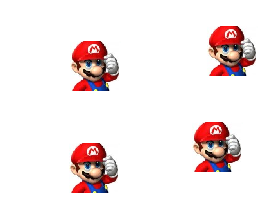Source image having 2 or more part matched with a template image
Hello! I was surveying image matchTemplate algorithm and found out there is no explanation about what happens when there are 2 or more regions matched with template image on the source image. For example, I want to find a rectangle in the image which has two exactly same rectangles. Does Function "matchTemplate" return 2 or more outlined part on one Source image? Or 2 or more Source images with one outlined region each? Or just treat as exception?
I understood that finding image matched is related to Function "minMaxLoc", but, again, there is no explanation about what happens when there are 2 or more maximum values with different indexes on matrix. I have been so curious about this situation, but cannot infer what will happen on this special situation. If I understood the reference correctly, the code does not consider such condition. It only deals with situation that there are one maximum value and one minimum value.
I really want to execute by myself, but I cannot access development environment recently. And there is no way to understand why it happens like that. As a student who is not a skilled programmer, I'd appreciate some help on this problem. Thanks!
Jeff Lee
PS.I was reading information on http://www.stb-tester.com ,which is about Set Top Box Test Tool using matchTemplate algorithm, and end up here.





